Research: Spectroscopy and Quantum Optics
LASER PHOTOIONIZATION OF RADIOACTIVE SPECIES
SPES: an ISOL facility at INFN-LNL
SPES, standing for “Selective Production of Exotic Species”, is a research facility recently built at INFN-LNL with the purpose of performing the so-called Isotope Separation On-Line (ISOL) for the production of Radioactive Ion Beams (RIBs) with applications in nuclear physics, astrophysics and medical physics. ISOL is based on the impingement of a proton beam with energy of some tens of MeV, coming from a cyclotron, on fissile or non-fissile targets. The consequent nuclear reactions generate exotic nuclides, which can be extracted from the target according to their chemical properties at high temperature (~2000°C at SPES). Once left the production target, the nuclides reach an ion source, where they are ionized in order to be accelerated by a high voltage. This creates the RIB, which can be sent through a mass separator (e.g., a velocity filter) to become isobaric.
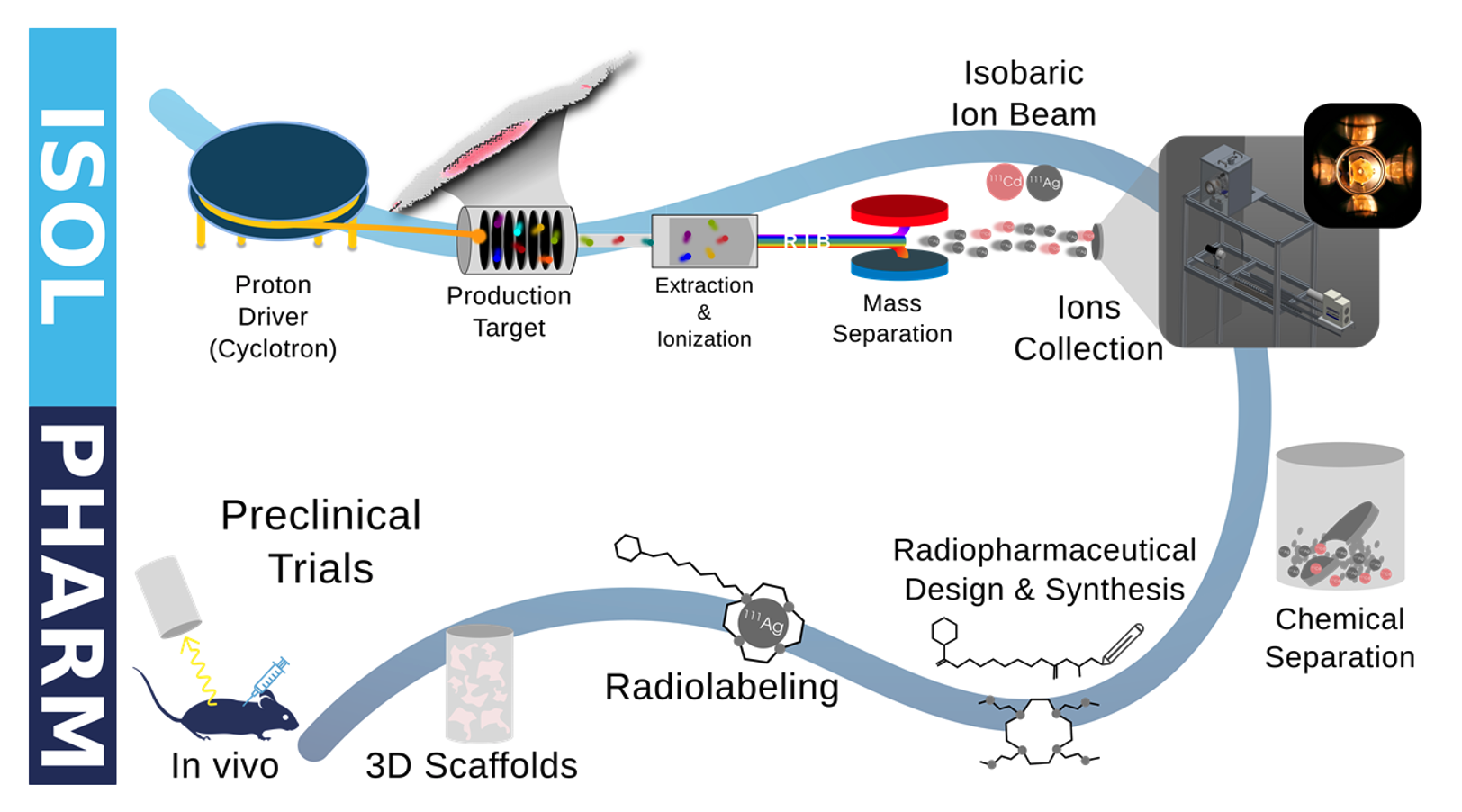
Schematic representation of the ISOL technique and its application to radiopharmacy (see below).
SPES Laser Ion Source
In the framework of SPES, ion sources represent one of the most important technologies. They play a fundamental role in the ISOL, as they allow the ionization of the exotic isotopes and later extracted in the form of radioactive ion beams. The most selective ion source available is certainly the Resonant Ionization Laser Ion Source ( ), which exploits the quantum nature of the atomic excitation. In a RILIS, a combination of laser beams with precisely-tuned frequencies populates subsequent excited levels of the atoms of the chosen element, taking the outermost electron close to (or over) the ionization threshold.

Schematic representation of laser ion source
The timescale from the moment the atoms enter the transfer line and arrive to the aperture of the ion source (end of hot cavity) is in the order of 50-100 𝛍s. To ensure that every atom meets at least a laser pulse, laser systems of 10 kHz will be employed. The Ti:Sa laser cavity @10 kHz shown in the figure below is already installed and functional in the SPES online laser lab.

Sirah Credo Ti:Sa 10 KHz cavity
To be able to produce various isotopes of different elements, it is undoubtedly necessary to understand how to laser ionize the different elements. These activities are performed in another (offline) laser lab, where dye lasers are employed together with a system of hollow cathode lamp or a time of flight mass spectrometer (TOF-MS), to explore different ionization schemes of each element of interest. Elements including tin, aluminum, molybdenum, silver, tellurium have been studied so far in the offline laser lab.
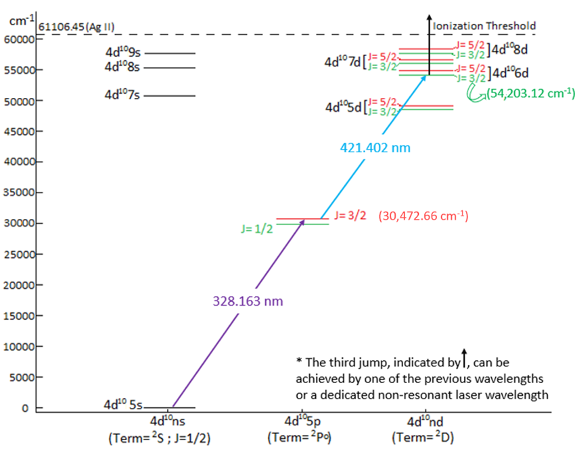 The photo-ionization scheme studied
The photo-ionization scheme studied
Taking the case of silver, the figures below show the resonance profiles of the atomic transitions of silver presented above. Silver is of great interest especially for the SPES-ISOLPHARM project, introduced below.
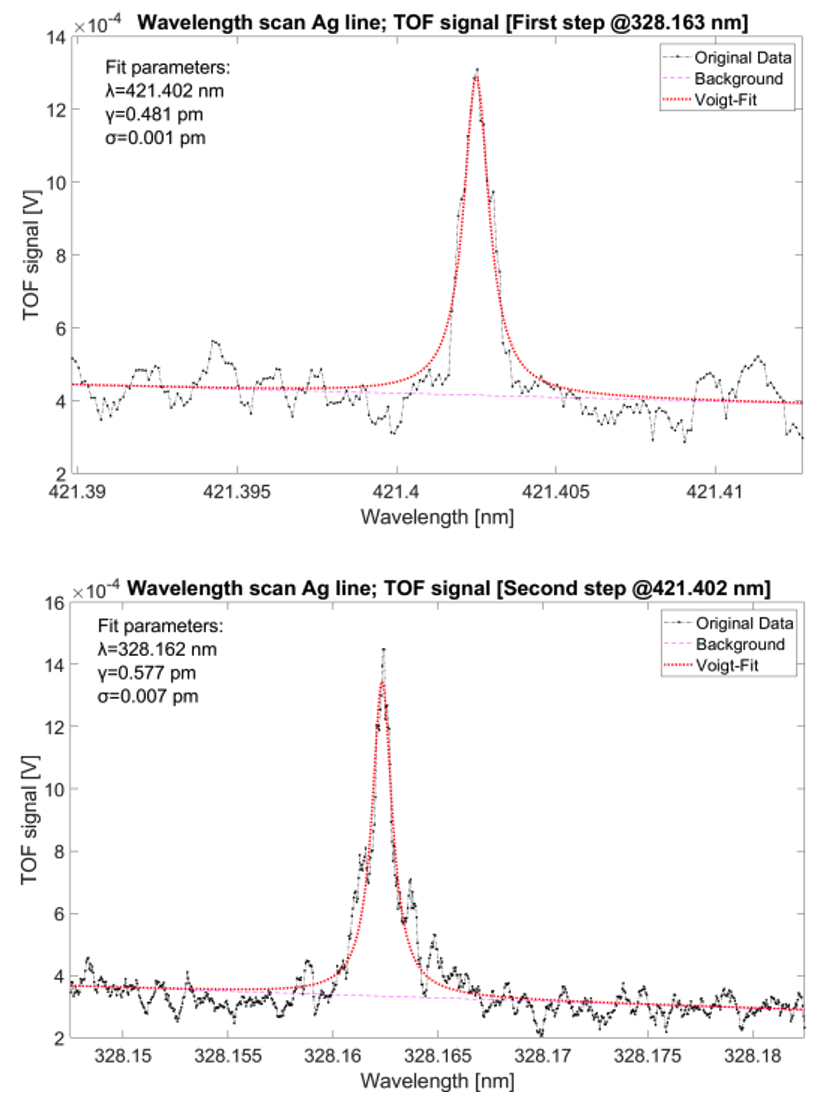
Resonance profiles of the atomic transitions
A new upgraded TOF-MS is also installed in the online laser lab to facilitate further the ionization scheme development activities. The geometry of the chamber is designed to allow the study of the atomic levels until the precision of fine structures.
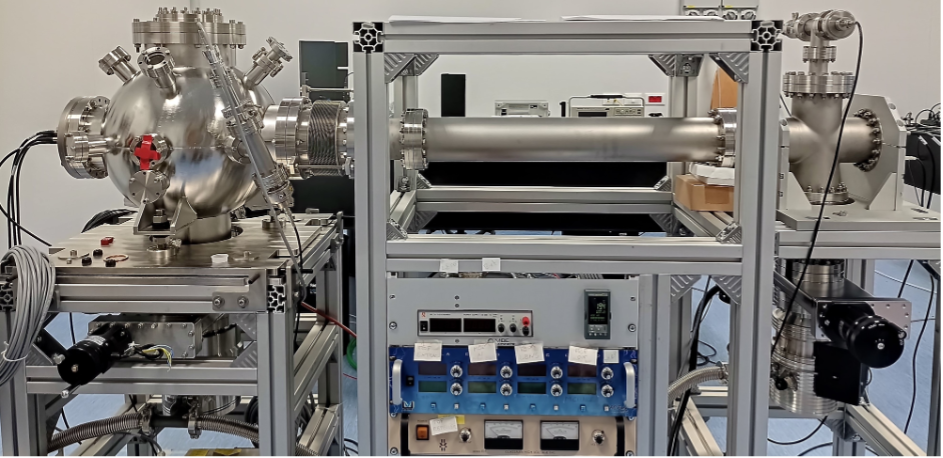
New upgraded TOF-MS in the online laser lab.
ISOLPHARM
The ISOLPHARM project was born at INFN-LNL in 2014. Its purpose is to provide usual and innovative carrier-free radioisotopes for medical use, taking advantage of the ISOL technique at SPES. During its first 10 years, the project has gathered a wide network of Italian institutions, ranging from several INFN sections and laboratories up to a big number of universities (Siena, Padova, Bologna, Catania, Trento, Pavia, Brescia) and some hospitals (Santa Maria Nuova in Reggio Emilia, Sant’Orsola in Bologna, Spedali Civili di Brescia). The INFN-CSN5 experiment ADMIRAL (2023-2025) and the PRIN ISOLPHARM_CORE (2024-2025), in particular, are focused on the study of unconventional radiopharmaceuticals labeled with 111Ag. Moreover, SPES_MED (2025-2027), recently approved by the INFN-CSN3 and led by the DSFTA Professor Emilio Mariotti, will explore the ISOL production of Mg, K and Cr isotopes for medical use. The project relies on a strong interdisciplinary collaboration, with scientific expertise ranging from physics and engineering up to chemistry and biology. The state of the art of ISOLPHARM is currently focused on the preclinical study in vitro and in vivo of the β- decay radiation of 111Ag and on the development of imaging devices, including an optimized γ-camera and a β-microdetector. These activities are supported by computational simulations using Monte Carlo codes, such as Geant4, MCNP and FLUKA, in order to attain a precise dosimetry of the living samples treated and to improve the detector parameters. In detail, the aim of ADMIRAL is to start from trials using free 111Ag and pursue the assessment of a novel radiopharmaceutical composed by the PSMA-617 targeting agent for prostatic cancer and the DO4S chelator for Ag. Until SPES will be fully operational, the production of small quantities of 111Ag is being performed at the LENA facility (Pavia), where a Triga Mark II nuclear reactor is available; irradiation of 110-enriched Pd with thermal neutrons is exploited.

TRIGA Mark II research reactor (left) and LENA radiochemistry laboratory (right).

Autoradiography of a mouse injected with free 111Ag.
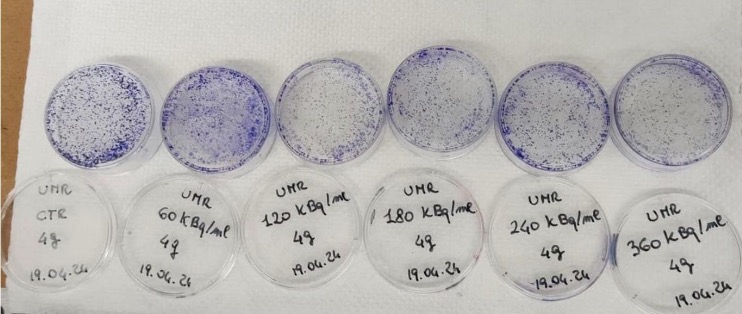
Cancer cell cultures after a 4-day exposure to radioactive medium containing different 111Ag concentrations.